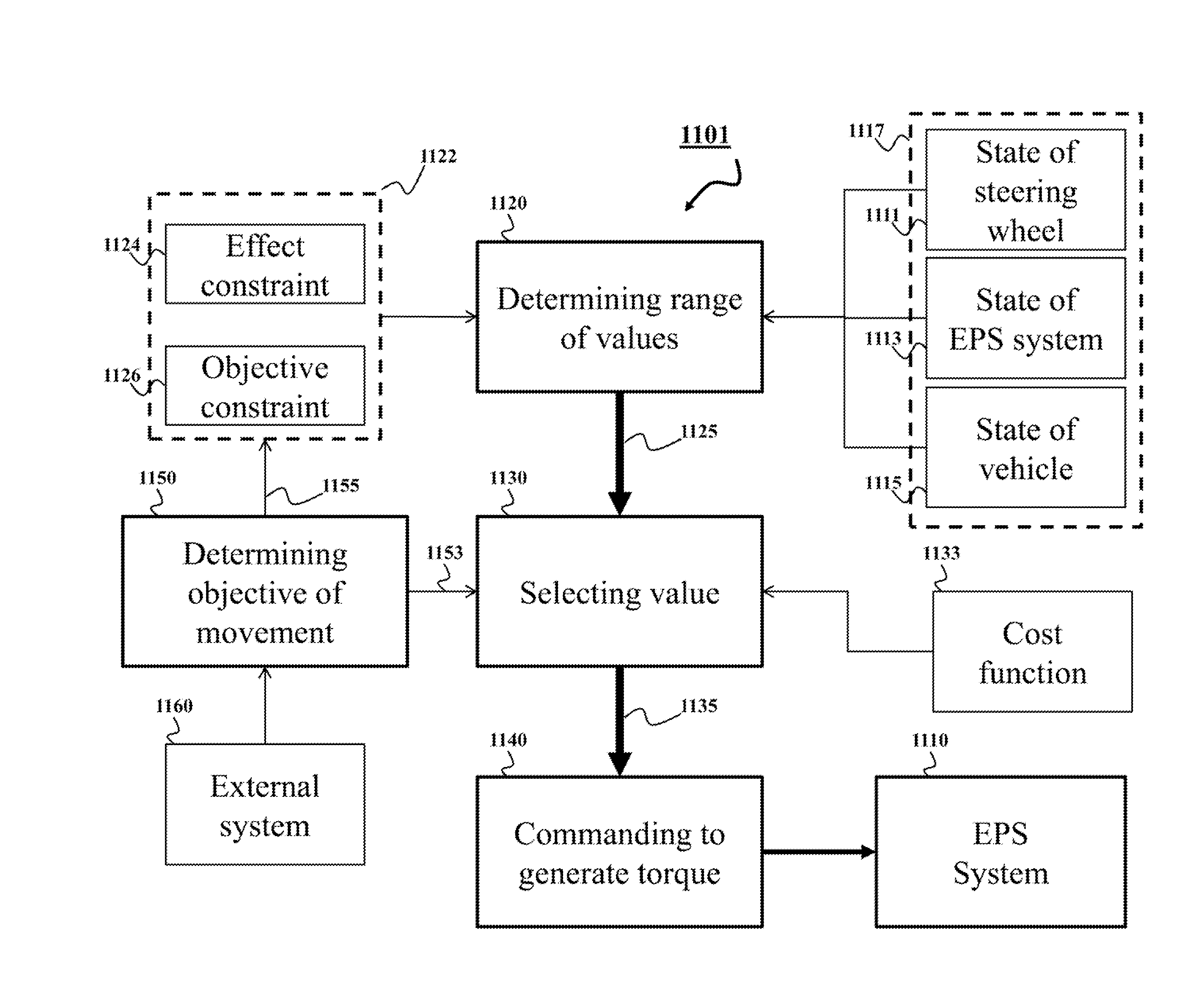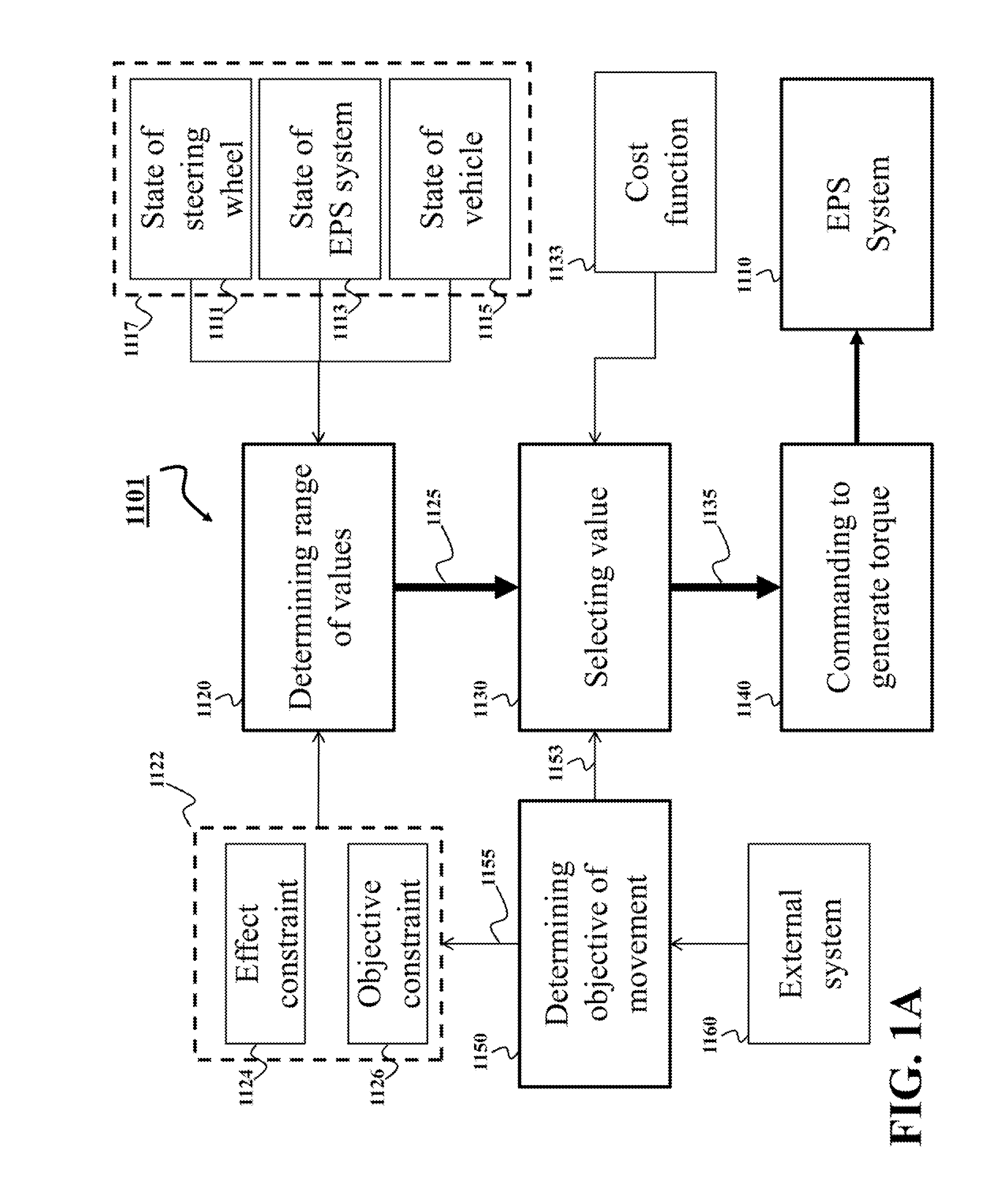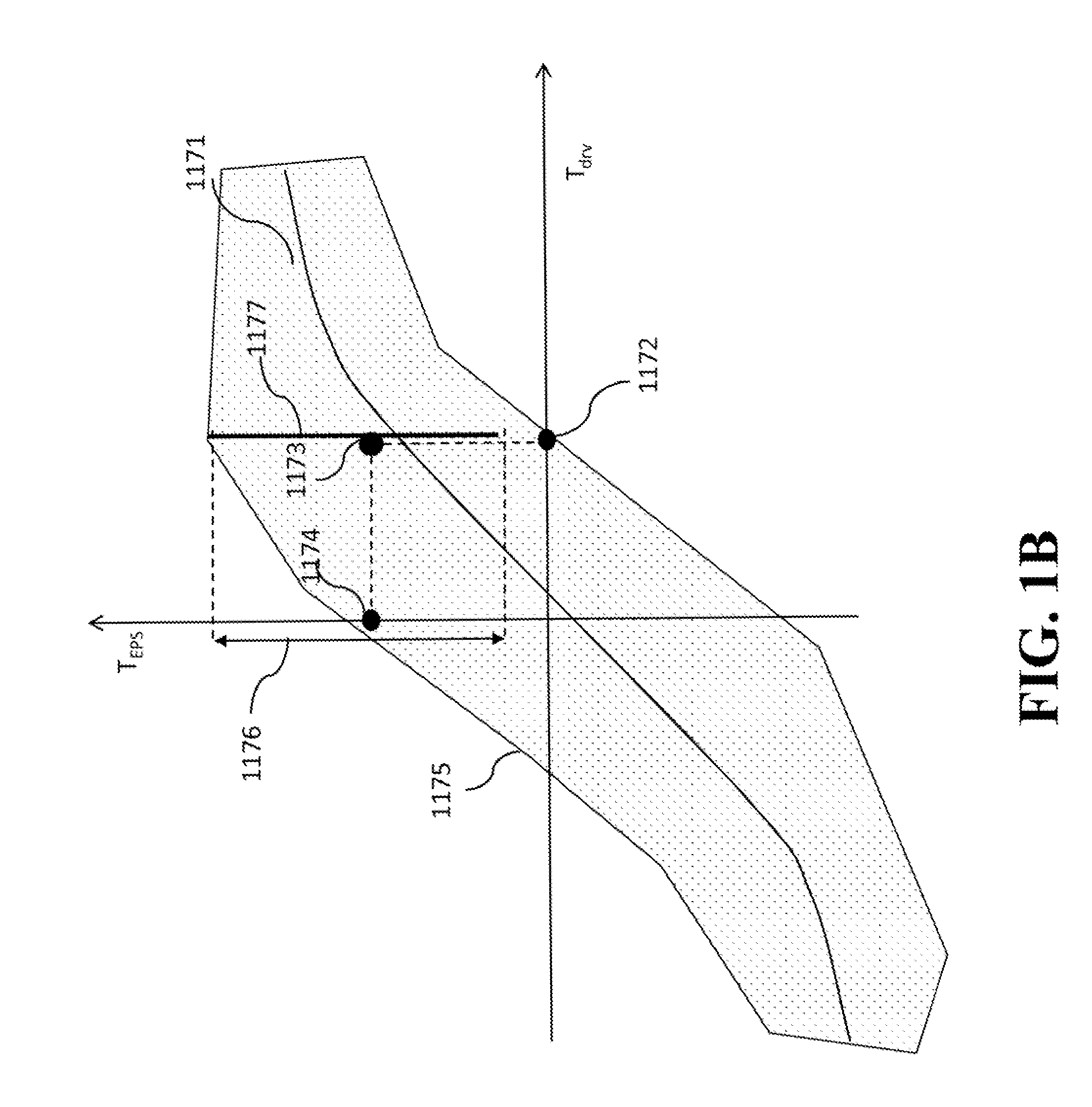System and Method for Controlling Electric Power Steering System
a technology of electric power steering and electric power steering, which is applied in the direction of steering initiation, instruments, vessel construction, etc., can solve the problems of reducing the lateral response of the vehicle, improper design or control of the electric power steering system can be detrimental, and the vehicle loses sensitivity to the lateral response, so as to improve the turning angle of the vehicle, maintain and recover the effect of vehicle motion stability and reducing the effort of the driver
- Summary
- Abstract
- Description
- Claims
- Application Information
AI Technical Summary
Benefits of technology
Problems solved by technology
Method used
Image
Examples
Embodiment Construction
[0028]FIG. 1A shows a diagram of a method for controlling a torque of an electric power steering (EPS) system 1110 of a vehicle according to some embodiments of the invention. Steps of the method can be implemented by a processor 1101. The embodiments determine 1120 a range 1125 of values of the torque of the EPS system satisfying constraints 1122. The constraints 1122 include at least one constraint 1124 on an effect of the torque of the EPS system on the steering wheel. The constraint 1124 ensures that for any value of the torque within the range 1125, the comfort and safety of the driver of the vehicle are maintained within acceptable level determined, e.g., by a designer of the EPS system 1110.
[0029]The constraint 1124 can be predetermined or selected 1155 based on an objective of the movement of the vehicle. The constraints 1122 can also include additional constraints. For example, in some embodiments the constraints 1122 include at least one objective constraint 1126 selected ...
PUM
 Login to View More
Login to View More Abstract
Description
Claims
Application Information
 Login to View More
Login to View More - R&D
- Intellectual Property
- Life Sciences
- Materials
- Tech Scout
- Unparalleled Data Quality
- Higher Quality Content
- 60% Fewer Hallucinations
Browse by: Latest US Patents, China's latest patents, Technical Efficacy Thesaurus, Application Domain, Technology Topic, Popular Technical Reports.
© 2025 PatSnap. All rights reserved.Legal|Privacy policy|Modern Slavery Act Transparency Statement|Sitemap|About US| Contact US: help@patsnap.com



